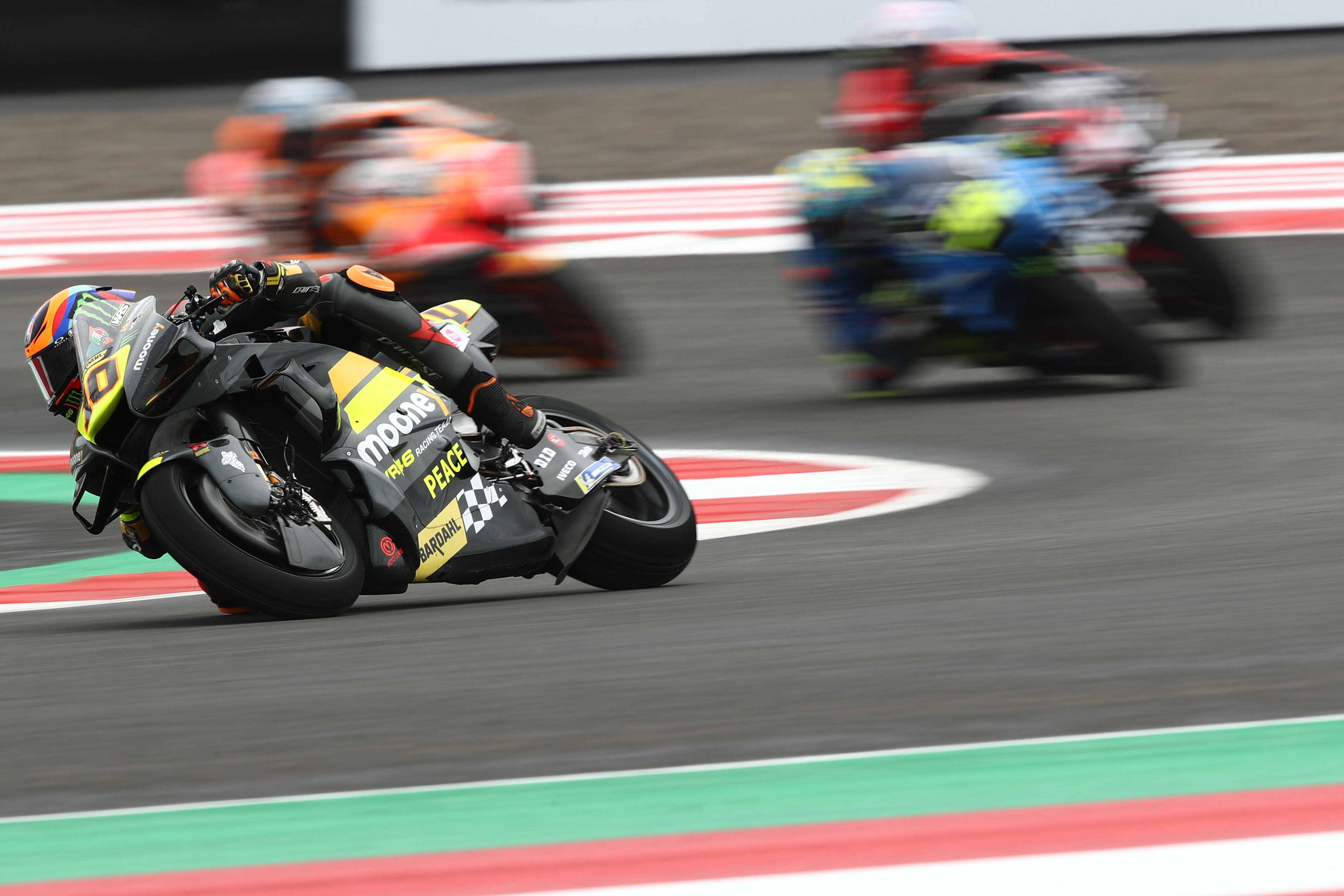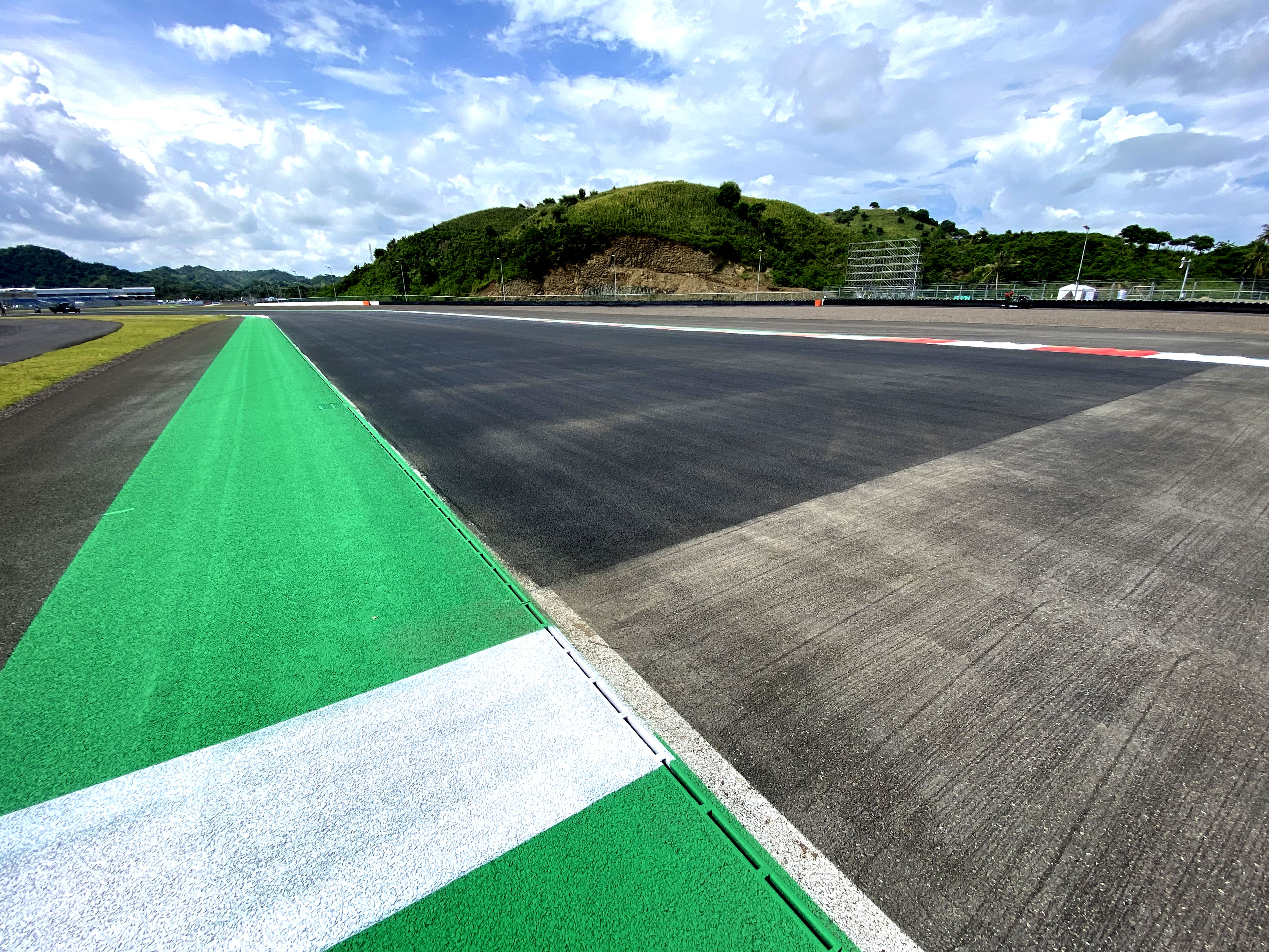The major Mandalika problems that must be properly fixed
Despite the delay it caused, rain played a big part in ensuring the Mandalika Bay MotoGP race could go ahead safely. But major issues with the circuit can’t be forgotten, and must be rectified for 2023

While last weekend’s Indonesian Grand Prix at the new Mandalika Bay circuit might have been saved by torrential rain just before last Sunday’s MotoGP race started, preventing further damage to the asphalt of the year-old track and allowing the race to go ahead safely, it’s clear that urgent measures now need to be put in place before next year’s event.
Mandalika’s issues initially appeared at November’s first international event at the brand new circuit, when World Superbikes headed for its first visit to Indonesia since 1997. It wasn’t heavily reported at the time, thanks again to heavy rain preventing a bigger issue, but there were nonetheless problems with the surface falling apart under the stresses of the bikes.
That issue came to the fore, however, at February’s MotoGP test when it became apparent that the track was definitely being ripped apart by the bikes. Constructed using an aggregate composition that wasn’t the one originally specified, it meant that the stones (one key component in the asphalt) hadn’t bound properly to the bitumen, the other constituent of the mixture.
Not only was it not the specified composition (and instead softer than it should have been), but the stones were also not screened and washed properly in preparation for being mixed with the specially sourced 180C bitumen.
The end product was a surface that, when passed over by 300bhp MotoGP bikes, turned into a veritable firing range as stones were sucked loose and fired back at those following, leaving a number of riders with bruises and a some bikes with mechanical issues caused by the ingestion of flying debris.
As a result, a stopgap measure was implemented for last weekend’s race, with a third of the surface relaid in an attempt to address the worst of the issues. But while it addressed the problem of the stones coming loose, it created a whole different one: asphalt that, due to the rush in which it was laid, started to crumble under stress.
It was particularly bad in the final corner – first noticed coming apart on Saturday night, not under the effects of race bikes but during demonstration laps by the BMW safety cars – and the situation got even worse on Sunday, leading to a last-minute shortening of both the Moto2 and MotoGP races in an attempt to mitigate the problems as much as possible.
Further issues were eventually saved by the torrential rain that came just before the main race, meaning the first Indonesian Grand Prix in 25 years could be completed, albeit in a shortened form and under less than ideal circumstances. But it also means that serious work must now be completed.

That work will comprise nothing less than a full and complete resurfacing of the entire 2.673-mile circuit, something that while costly and time-intensive has been caused by the original decision to skimp on the specification of asphalt used.
The equipment, aggregate and bitumen needed are not locally available, so the first step in doing the job properly will be a monumental logistics operation just to put all the pieces in place in the first instance.
Resurfacing equipment was rushed in to complete the emergency repairs last month from the resurfacing of the runway at Jakarta’s second airport, rushed off that job under police escort and shipped 800-plus miles to the island of Lombok.
It wasn’t the high-precision machinery needed to do the job properly but more what was available at short notice, which meant that the repair job had a series of new bumps and undulations that weren’t in the original laying. This in turn means an even bigger operation will be required next time around to find the right machinery (and the correctly trained precision operators).
Then there’s the matter of the bitumen, the tar-like glue needed to hold the stones together. It needs to be transported hot and is not greatly available locally either, and has to arrive within seven days of production so it doesn’t set.
But the most critical component seems to be the aggregate stones. They need not only to be the correct hardness but also crushed to a specific diameter and then washed to remove excess debris that prevents the bitumen from binding (a key reason why stones were coming loose from the track at the test). The original order specified that the thousands of tons of material needed also had to be shipped from 500 miles away.

The good news, of course, is that Mandalika now has until November and the next WSB round to get the job done properly, something that will come with a welcome sigh of relief given the issues of rushing through an emergency repair job last month – and with at least some of the issues at the race seeming to stem from not giving the surface proper time to bed in before racing on it.
It’s obvious, though, that the repair work is absolutely critical to the future of the race following rider feedback. Quite simply it must be completed before it’s fully safe to race upon.



